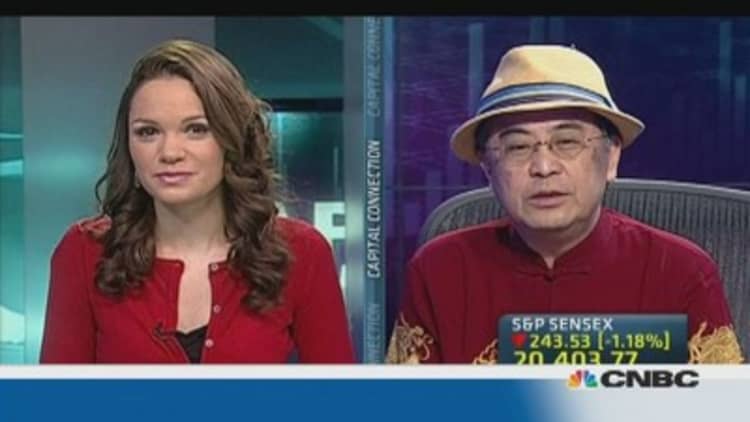The contraction in China's official PMI reading has been largely blamed on the Chinese New Year holiday break, but some analysts argue that the dip is still reflective of slowing growth in the world's number two economy.
China's official manufacturing purchasing managers' index fell to 50.5 in January, down from 51.0 in December data released Saturday showed. The dip in the official PMI followed a decline in China's final HSBC PMI index last week to 49.5 in January from 50.5 in December, the first drop below 50 - the level that separates contraction from expansion - since August.
(Read more: Why China doesn't face a hard landing in Year of the Horse)
Traditionally, China's January PMI reading is distorted by the Lunar New Year holiday as people take seven days off of work and many businesses and factories shut down. But some analysts said they weren't convinced the dip could be entirely blamed on the holiday lull.
"We think that some part of the weakness was due to the Chinese New Year holiday. However, together with the [final] Markit/HSBC reading, it is getting clearer that the economic slowdown has begun again," read a note from Societe Generale's China economists.
China's gross domestic product (GDP) expanded at a rate of 7.7 percent last year, its slowest rate since 1999 and down from 7.8 percent growth in 2012, compounding views that world's number two economy, which had enjoyed decades of double-digit growth, is slowing.
Policy makers are attempting to negotiate the challenging task of transitioning its economy from unsustainably high investment-led growth to a more healthy consumption-driven economy. Meanwhile, fears of bubbles forming in the nation's property and massive credit markets have also added to concerns.
According to Jian Chang, a Hong Kong based economist at Barclays Capital, the impact of the holiday period on PMI data had been minimal in the past two years, suggesting that the holiday wasn't the only factor driving PMI lower this year.
(Read more: Whya China shadow banking crisis sparks fear)

"The January PMIs paint a downbeat picture on the demand outlook, supporting our theme of growth moderation," he said.
"We believe the combination of weaker new orders, slower raw material purchases and increased inventories points to a further slowdown in production activities ahead," added Chang.
Within the official PMI data, the production index dropped from 53.9 to 53, while new orders weakened from 52 to 50.9, partly due to another decline in export orders from 49.8 to 49.3.
Liu Li Gang, chief economist for Greater China at Australian investment bank ANZ, said in a note that he saw China's growth trending downwards as structural reforms came into effect.
(Read more: Chinese can't say neigh to feng shui in year of the horse)
"We maintain our view that the growth momentum will trend down somewhat in Q1, and see that the upcoming structural reforms could continue to weigh on the economic growth over the next few quarters," he said.
"It will be wise for the authorities to set a GDP growth target at 7 percent, rather than 7.5 percent [as it did in the] in the previous two years, so that more efforts could be devoted to implementing reform measures," he added.
Analysts at Goldman Sachs, meanwhile, said it was difficult for interpret January PMI data points through the noise of the Chinese New Year.
"Although the number of working days is the same this January as last January, we think there could be some downward distortions on activity growth as a result of the holiday season given the CNY took place earlier this year on 31 January (versus 9 February last year) and activity data tends to be distorted on the downside before the official start of the Chinese New Year holiday," said the Goldman Sachs analysts, adding that this distortion could be as large as 1 percent.
— By CNBC's Katie Holliday: Follow her on Twitter @hollidaykatie


